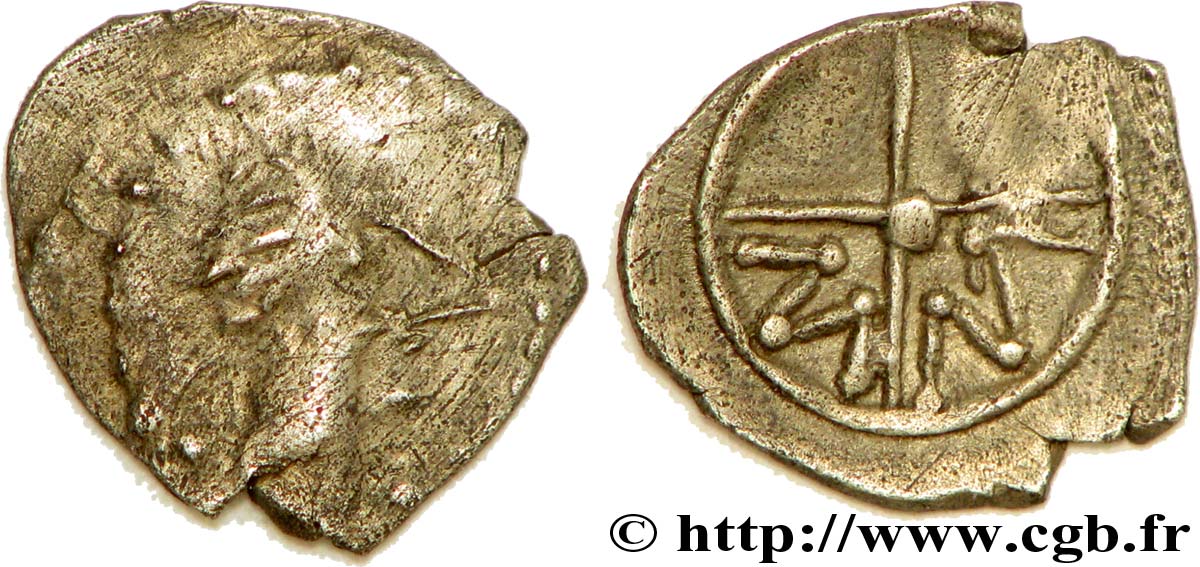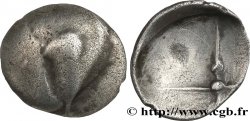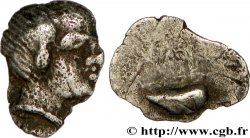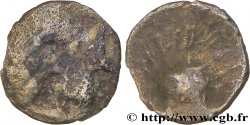bga_210206 - SALUVII Obole MM, tête à droite, stylisée
недоступный.
Товар уже продан в нашем интернет-магазине (2013)
Цена: : 105.00 €
Товар уже продан в нашем интернет-магазине (2013)
Цена: : 105.00 €
Тип Obole MM, tête à droite, stylisée
Дата: c. 150-50 AC.
Металл: silver
Диаметр: 11 mm
Ориентация осей монеты: 5 h.
Вес: 0,54 g.
Редкость: R2
Комментарии о состоянии
Monnaie frappée sur un flan très large et irrégulier. Frappe de qualité pour ce type, avec le droit et le revers complets. Patine grise, légèrement granuleuse
Лицевая сторона
Аверс: легенда: ANÉPIGRAPHE.
Аверс: описание: Tête stylisée à droite.
Обратная сторона
Реверс: легенда: M-M DANS LES 3E ET 4E CANTONS.
Реверс: Описание: Roue à quatre rayons.
Комментарий
Ces monnaies traditionnellement attribuées aux Salyens dégénèrent si vite que le portrait encore bien identifiable sur cet exemplaire laisse rapidement la place à un flan lisse.
Exemplaire de poids relativement lourd pour ce type, avec les lettres M-M au lieu de M-A ou A-M au revers.
Exemplaire de poids relativement lourd pour ce type, avec les lettres M-M au lieu de M-A ou A-M au revers.








 Cообщить об ошибке
Cообщить об ошибке Распечатать страницу
Распечатать страницу Отправить мой выбор
Отправить мой выбор Задать вопрос
Задать вопрос Consign / sell
Consign / sell
 Информация
Информация



